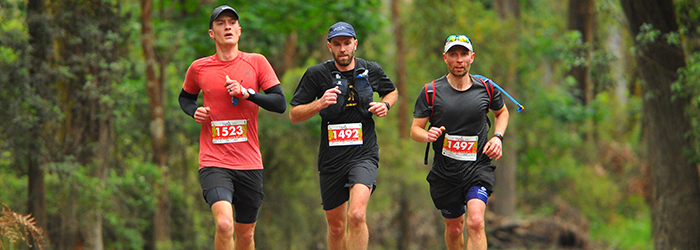Are you wearing the correct shoes?
Performing at your best is only possible with the right equipment and when we talk trail running, it’s all about the shoes. Without the right trail shoes, you waste energy, time and increase the chance of getting injured.
The team at Footpro are trail running shoe experts and have a few tips on how to get your trail shoes fitted and be ‘Trail Run Ready’!
The only thing similar about trail running and road running shoes is that they are made of similar materials, and that’s about it. They are actually very different. Trail running has a wonderfully raw, natural easy-going appeal. To maximise the experience, your trail shoes need to connect you to the trail, creating an extension of your foot that can deal with the terrain.
No two foot shapes are the same, and buying trail running shoes is an extremely personal choice. Just because a friend loves a certain shoe, doesn’t mean you will too.
Fit and Function come first.
The Fit – Try on a decent range of trail shoes and be guided by a shoe expert on what size and fit would suit you. Your feet should be safe and secure, but with room around the toes.
The Function – Talk with your shoe fitter about your running experience, or lack of, and your goals. Be realistic!
Do you run mainly slow, medium or fast?
Do you run short, medium or long distances?
Do you have a history of injuries, acute or chronic?
What are the trails you like to run?
Your conversations with a trail shoe expert will help guide the shoes selection for example; what kind of tread pattern you need, how much stack height, how heavy or light the shoe needs to be, soft foam or a rigid rock plate.
Your Trail Running shoe checklist
- Fit comes first: A finger / thumb width of space in front of your longest toe.
Snug fit around the heel and midfoot, but not too squeezy at the widest part of your foot.
- Stack height and Offset: Does the trail shoe stack height and heel-to-toe drop suit what you need?
- Weight: weight of your trail shoe suitable for what you are doing?
- Price: Buying the most expensive trail shoe does not guarantee the best results.
Other trail running equipment
For the Trail Running Series Presented, there isn’t much more that you need in terms of specialist gear given the relatively short distances and the fact that although in beautiful environs, you’ll never actually be far from civilisation! But in general, trail runners may want to think about:
- Wicking clothing made from polyester, such as trail running tees and polyester fleece mid layer style tops, are best to keep you cool when it’s hot and warmer when it’s not.
- Compression/circulation garments: whether you believe they work or not, compression garments are great for comfort and protection.
- Some runners – especially when distances creep up over 10km – may want to think about carrying some water. You can carry it in bottles or in a hydration pack.


